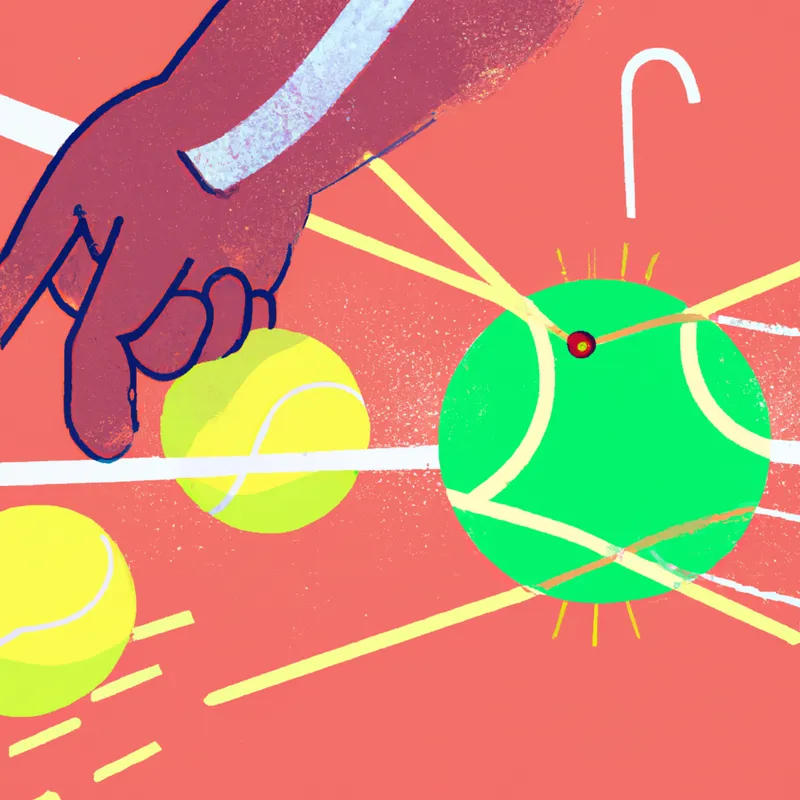Master the Art of Ball Tracking in Tennis
The Science of Tracking the Ball: Techniques Used by Professional Tennis Players
Tennis combines speed, precision, and strategy. Players must track the ball effectively to improve reaction time and shot accuracy. Professional players use various techniques to enhance their ball-tracking abilities, leading to better court performance. This blog post explores these techniques, providing tips to elevate your game.
The Importance of Visual Acuity
Visual acuity, or sharpness of vision, forms the basis of effective ball tracking. Professional tennis players train their eyes to focus quickly and accurately on the ball. They practice recognizing the ball’s spin, speed, and trajectory to make informed decisions during play. Improved visual acuity facilitates better shot selection and enhances overall gameplay.
Focus on the Ball
Players must maintain intense focus to track the ball accurately. “Foveal vision” helps players concentrate on the ball’s details, such as seams or texture. This concentration allows players to gather valuable information about the ball’s speed and spin.
To develop this skill, players can engage in drills emphasizing visual focus. Practicing with different ball types, such as low-bouncing and high-bouncing, helps players adapt. Training peripheral vision also proves beneficial. Peripheral vision enables players to observe their opponent’s movements while concentrating on the ball. Exercises that involve tracking multiple balls can enhance focus and peripheral awareness, improving overall court performance.
Anticipation and Prediction
Anticipation plays a critical role in effective ball tracking. Professional players learn to predict the ball’s trajectory by analyzing their opponent’s body language and racket angle. This analysis helps them react quickly and accurately, providing a competitive edge.
Reading Body Language
Reading an opponent’s cues is vital in tennis. A slight weight shift or grip change indicates the type of shot an opponent may take. By observing these signals, players can position themselves accordingly and prepare for the ball’s trajectory. Players can practice this skill through drills that involve anticipating shots based on visual cues, such as the opponent’s stance and racket movement.
Additionally, watching video footage of professional matches helps develop this skill. Analyzing how top players react to different situations enhances your understanding of the game and improves anticipation. This practice enables quicker and more effective decisions during matches.
Reaction Time Drills
Improving reaction time is essential for any tennis player. Professional athletes employ specific drills designed to enhance their reflexes. These drills focus on quick decision-making and rapid movement, crucial during fast-paced exchanges.
Quick Feet and Hand
Players can enhance their quickness through agility drills and hand-eye coordination exercises. These activities improve overall responsiveness on the court.
Conclusion
In summary, mastering ball tracking techniques can significantly elevate your tennis game. Focus on visual acuity, anticipation, and reaction time to enhance your performance.
Below are related products based on this post:
FAQ
What is visual acuity and why is it important in tennis?
Visual acuity refers to the sharpness of vision, which is crucial for effective ball tracking in tennis. Professional players train their eyes to quickly and accurately focus on the ball, allowing them to recognize its spin, speed, and trajectory. Improved visual acuity leads to better shot selection and enhances overall gameplay.
How can players improve their anticipation skills in tennis?
Players can enhance their anticipation skills by learning to read their opponent’s body language and racket angle. Observing cues like weight shifts or grip changes can provide insight into the type of shot an opponent may take. Practicing drills that focus on these visual cues, as well as analyzing video footage of professional matches, can significantly improve a player’s ability to predict the ball’s trajectory.
What types of drills can help improve reaction time for tennis players?
To improve reaction time, players can engage in specific drills that focus on quick decision-making and rapid movement. Agility drills and hand-eye coordination exercises are effective methods to enhance quickness on the court. These activities help players develop the reflexes necessary for fast-paced exchanges during matches.















Post Comment